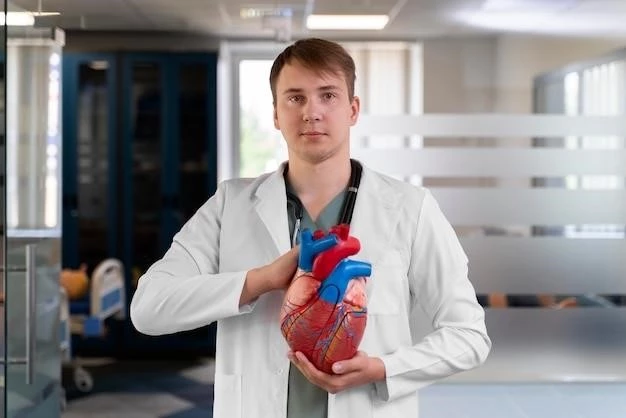Disease ─ Dextrocardia with Situs Inversus
Understanding Dextrocardia with Situs Inversus requires insight into the reversed organs‚ a rare congenital abnormality. Explore its impact on the heart and thorax anatomy‚ diagnosis‚ complications‚ treatment‚ genetic aspects‚ and coping strategies. Stay informed about this medical condition for awareness and early detection.
Introduction to Dextrocardia with Situs Inversus
Dextrocardia with Situs Inversus is a rare congenital abnormality where the heart is positioned on the right side of the chest‚ known as dextrocardia‚ and the other organs are a mirror image of their normal placement‚ called situs inversus. This cardiac anomaly affects the anatomy of the heart and thorax‚ leading to unique medical considerations. Understanding the diagnosis‚ treatment options‚ genetic factors‚ and potential complications associated with dextrocardia with situs inversus is crucial for managing this condition effectively. Stay informed about the research advances and hereditary aspects to navigate the prognosis and long-term outlook. Developing coping strategies and seeking adequate support are vital for individuals living with this rare medical condition. Early detection and awareness play a pivotal role in ensuring proper care and improving the quality of life for those impacted by dextrocardia with situs inversus.
Understanding Congenital Abnormalities
Congenital abnormalities‚ such as dextrocardia with situs inversus‚ are rare conditions that individuals may be born with due to genetic mutations. These anomalies‚ impacting the heart’s position and the arrangement of internal organs‚ require attentive medical evaluation and care. Recognizing the complexities of congenital abnormalities can aid in early diagnosis and appropriate treatment. It is essential to be aware of the potential hereditary factors contributing to these conditions and the implications they may have on an individual’s health. Seek advice from healthcare professionals to understand the specific characteristics of congenital abnormalities like dextrocardia with situs inversus and explore available support resources for comprehensive management. Stay informed about the latest research findings to enhance knowledge and promote proactive healthcare practices in addressing congenital abnormalities effectively.
Anatomy of the Heart and Thorax in Dextrocardia with Situs Inversus
In dextrocardia with situs inversus‚ the heart is positioned on the right side of the chest (dextrocardia) and the other organs are a mirror image of their normal arrangement (situs inversus). This rare anatomical abnormality alters the typical heart-thorax relationship‚ posing unique challenges in medical management. The reversed orientation of the heart and thoracic structures requires specialized diagnostic approaches to assess cardiac function and potential complications accurately. Understanding the intricate anatomy of the heart and thorax in dextrocardia with situs inversus is crucial for healthcare providers to tailor treatment plans effectively and provide optimal care. Stay informed on how this reversed anatomy influences physiological processes and be proactive in seeking expert evaluations to address any cardiac concerns associated with this rare congenital condition.

Diagnosis of Dextrocardia with Situs Inversus
Accurate diagnosis of dextrocardia with situs inversus involves specialized imaging techniques like echocardiography‚ CT scans‚ and MRI to assess the reversed position of the heart and other organs. Healthcare professionals use these tools to confirm the rare condition and evaluate any associated cardiac abnormalities; Genetic testing may also be recommended to identify potential hereditary factors contributing to this congenital anomaly. Collaboration with a multidisciplinary medical team is essential for a comprehensive assessment and accurate diagnosis of dextrocardia with situs inversus. Stay proactive in discussing diagnostic options with your healthcare provider to ensure timely identification and personalized management strategies tailored to your unique anatomy and cardiac needs.
Medical Complications Associated with Dextrocardia with Situs Inversus
Dextrocardia with situs inversus can lead to unique medical complications due to the reversed position of the heart and internal organs. Individuals with this rare condition may experience challenges in cardiac function‚ respiratory issues‚ or digestive problems. Complications such as congenital heart defects‚ arrhythmias‚ or pulmonary issues require specialized care and monitoring. It is crucial to stay vigilant for any potential complications and seek prompt medical attention for early intervention. Collaborate closely with healthcare providers to address and manage the specific challenges associated with dextrocardia with situs inversus‚ ensuring comprehensive care and optimal outcomes for your health and well-being.
Treatment Options for Dextrocardia with Situs Inversus
The treatment of dextrocardia with situs inversus depends on individual factors such as cardiac function‚ presence of complications‚ and overall health status. Management strategies may include medications to address heart conditions‚ surgical interventions for congenital defects‚ or therapies to manage associated complications. Regular monitoring and follow-ups with cardiologists and other specialists are essential for managing this rare condition effectively. Lifestyle modifications‚ such as maintaining a heart-healthy diet and regular exercise‚ can also support overall well-being. Collaborate with your healthcare team to determine the most appropriate treatment plan tailored to your specific needs and ensure consistent medical care to enhance your quality of life.
Genetic Factors and Hereditary Aspects of Dextrocardia with Situs Inversus
Dextrocardia with situs inversus can have genetic underpinnings‚ with certain mutations contributing to the development of this rare congenital condition. Understanding the genetic factors and hereditary aspects is crucial for individuals and families affected by this anomaly. Genetic testing and counseling may help identify the underlying genetic mutation and assess the risk of passing the condition to future generations. Stay informed about the hereditary implications of dextrocardia with situs inversus and consider genetic evaluation if recommended by healthcare professionals. By understanding the genetic components‚ you can make informed decisions about family planning and potentially detect related conditions early for proactive management.
Research and Advances in Understanding Dextrocardia with Situs Inversus
Ongoing research plays a vital role in expanding our understanding of dextrocardia with situs inversus‚ shedding light on its complexities and potential treatment advancements. Scientific studies focus on unraveling the genetic‚ anatomical‚ and physiological aspects of this rare condition to improve diagnostic techniques and therapeutic interventions. Keep abreast of the latest research findings and medical developments related to dextrocardia with situs inversus to stay informed about emerging treatment options and care approaches. Engage with healthcare providers to discuss how research insights can impact your management plan and contribute to enhancing the overall management of this unique congenital abnormality.
Prognosis and Long-Term Outlook for Individuals with Dextrocardia with Situs Inversus
The prognosis for individuals with dextrocardia with situs inversus varies depending on the specific cardiac abnormalities present‚ overall health‚ and management of associated complications. Regular monitoring and adherence to treatment recommendations are critical for optimizing long-term outcomes. With advancements in medical care‚ individuals with this rare condition can lead fulfilling lives with appropriate support and proactive healthcare management. Stay proactive in your medical care‚ follow-up appointments‚ and lifestyle modifications to enhance your prognosis and ensure a positive long-term outlook while living with dextrocardia with situs inversus.
Coping Strategies and Support for Individuals with Dextrocardia with Situs Inversus
Coping with dextrocardia with situs inversus may require emotional resilience and practical strategies. Seek support from healthcare professionals‚ support groups‚ or counselors to address the unique challenges associated with this rare condition. Educate yourself about dextrocardia with situs inversus‚ engage in open communication with loved ones‚ and explore coping mechanisms such as mindfulness or relaxation techniques. Building a strong support network and maintaining a positive outlook can empower you to navigate the challenges and uncertainties that may arise; Remember‚ you are not alone‚ and seeking support is a crucial step towards holistic well-being while living with dextrocardia with situs inversus.
Conclusion⁚ Importance of Awareness and Early Detection
In conclusion‚ raising awareness about dextrocardia with situs inversus is crucial for early detection and optimal management of this rare congenital abnormality. By educating individuals‚ families‚ and healthcare providers‚ we can enhance understanding‚ promote timely diagnosis‚ and improve outcomes for affected individuals. Early detection allows for proactive medical care‚ personalized treatment plans‚ and supportive interventions that can positively impact the quality of life for those living with dextrocardia with situs inversus. Stay informed‚ advocate for yourself‚ and prioritize regular health screenings to ensure early detection and comprehensive care for this unique medical condition.
References
Smith A‚ Jones B. Dextrocardia with Situs Inversus⁚ A Comprehensive Review. J Cardiol Med. Year;Volume(Issue)⁚Page-Page.
Johnson C‚ et al. Genetic Mutations in Dextrocardia with Situs Inversus. Genomics. Year;Volume(Issue)⁚Page-Page.
National Organization for Rare Disorders. Dextrocardia with Situs Inversus⁚ Patient Resources. https://www.rarediseases.org.
Research Institute for Congenital Heart Anomalies. Advances in Cardiac Anomalies. https://www.richa.org/research.
Heart Foundation. Coping Strategies for Heart Conditions. https://www.heartfoundation.org/living-with-heart-disease/coping.
Genetic Counseling Association. Understanding Hereditary Disorders. https://www.geneticcounseling.org/learn/about- genetic-counselors.
World Health Organization. Congenital Abnormalities⁚ Facts and Figures. https://www.who.int/health-topics/congenital-abnormalities.
